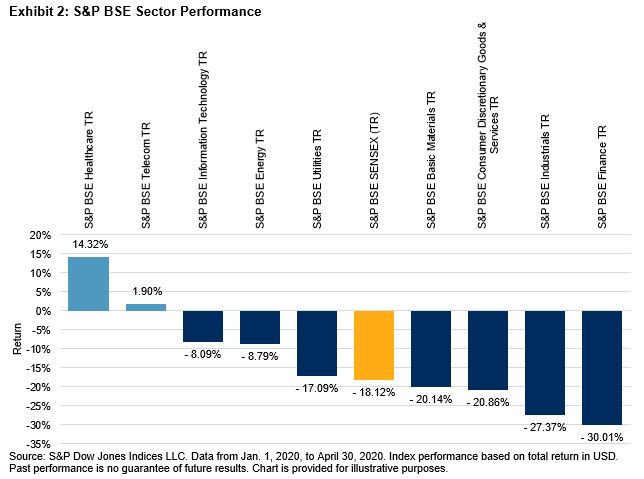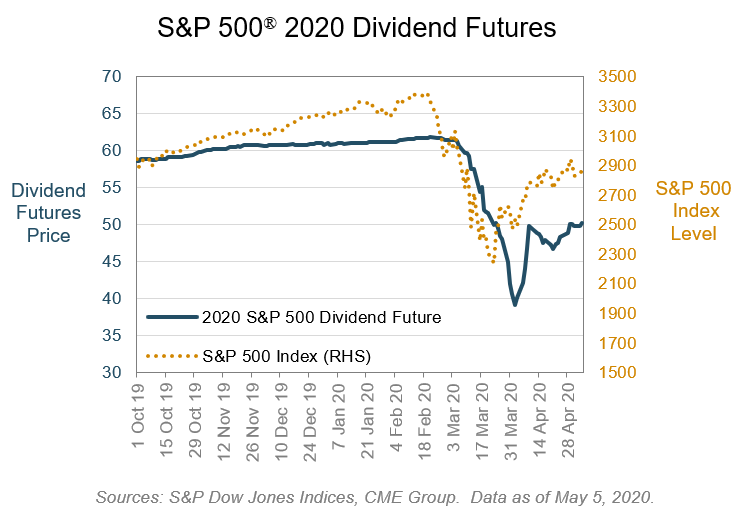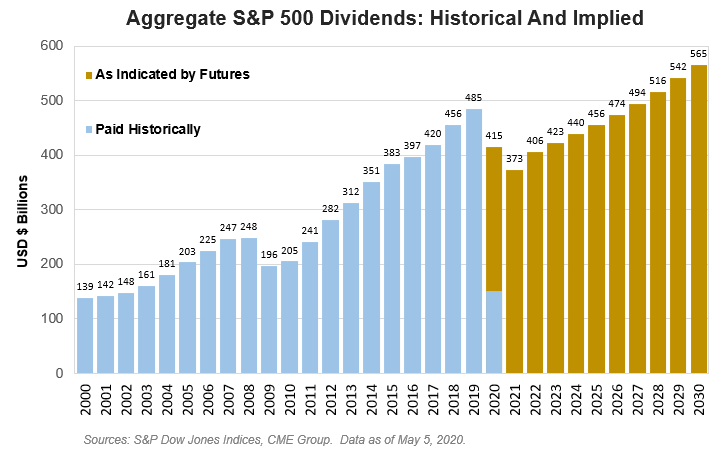Dividends play a vital role in many investors’ approach to the market, although there is more than one way to approach dividends. Some investors are most concerned with dividend yield per se, while others are more sensitive to the growth of dividends over time. Both approaches, of course, can be readily indicized. Within the U.S. large capitalization universe, the S&P 500 High Dividend Index comprises the highest-yielding companies in the S&P 500. The S&P 500 Dividend Aristocrats, in contrast, consists of S&P 500 members that have increased their dividends annually for at least 25 years. Exhibit 1 shows that both strategies have outperformed the S&P 500 over the long term.
In the short run, however, investor attention has turned increasingly to the sustainability of dividends, as more companies continue to cut or suspend their payouts. We previously discussed the tradeoff between the level versus the safety of dividend payments, and illustrated the durability of the S&P High Yield Dividend Aristocrats compared to an equivalent universe of high-payers. Here we conduct a similar analysis for large-cap Aristocrats, comparing them to the S&P 500 High Dividend Index, and see similar results: The S&P 500 Dividend Aristocrats’ dividends are safer than their high yielding peers.

Exhibit 2 compares the median values of the 500 Dividend Aristocrats and the High Dividend Index on a number of fundamental metrics that measure the strength of companies making dividend payouts.
The S&P 500 Dividend Aristocrats appear stronger across the board. For example:
- Earnings were almost double last year’s dividend payouts for the Aristocrats, vs. only 1x dividends for the high payers. Cash on hand was also a higher multiple of last year’s dividends.
- The Aristocrats’ buybacks were more than double those of the high payers, giving them more flexibility during a downturn like the present circumstances.
- Within large-caps, the Aristocrats are 2 times larger (median capitalization $29 billion) and more profitable (median ROE 18.9%) than their higher-paying counterparts.

We again caution that while we do not know how many more companies will cut or suspend their dividends or how severe the impact will be, we can conclude that the dividends of large-cap companies with consistent dividend growth are in healthier shape to withstand economic and market declines.
The posts on this blog are opinions, not advice. Please read our Disclaimers.




















































